Kim Hildebrand found her niche in in-home family portraits
Family portrait photographer Kim Hildebrand discusses how she got into the in-home family portrait niche
• May 2019 issue
About four years ago, Kim Hildebrand ditched the safety net of her studio rental and opted to photograph clients in their homes. What made this transition a gamble is that Hildebrand is located in Seattle. The challenges inherent in the city's famously moody weather are well known, but perhaps not so famous is Seattle's residential architecture, which includes charming older homes with low ceilings and small windows.
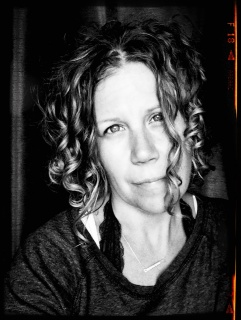
The studio had been a ready alternative location on dark, misty days and for clients who didn't want an in-home session. It served particularly well for newborns and small children. However, many families today aren't enthralled with the stark confines of a studio. Increasingly, Hildrebrand found her clients either wanted to capitalize on their quaint Pacific Northwest surrounds or to find a location that resonated with their personality. In all honesty, those issues weren't the root of Hildebrand's desire to revise her business: Photographing in the studio didn't bring her joy. Instead of freeing her with its endless possibilities, it was boxing her in. It was too much of a blank slate.
"I realized what I loved was photographing my kids doing their own thing in my house and watching them from afar," says Hildebrand. "I loved seeing the light, looking for the architectural elements, cool plants, wall hangings—and composing the shot with all of those elements. The studio was too blank. ... It was almost too open.
That was Hildebrand’s aha moment. What she enjoyed most about photographing her own family might be what other families wanted, too. Aren’t we all most comfortable at home? And if a photographer is aiming a camera at you, then being in a comfortable environment might be even more important.
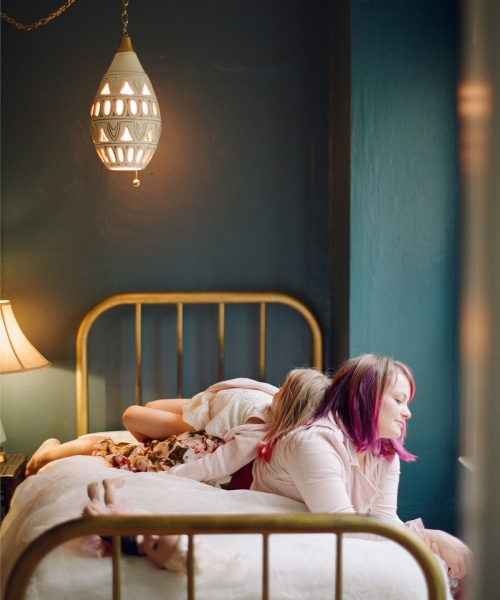
In addition to changing her session environment, Hildebrand switched to using film. Spending so much time in front of her computer editing was wearing her down. When a friend suggested she’d be happier with film, she acted on the advice by attending a local workshop.
“When I got the scans back, I fell in love all over again,” Hildebrand says. “The grain and quality of the film, the rendering of the skin tones and colors—I was smitten all over again.”
Hildebrand was no stranger to film. Before she had children, she was well versed in 35mm, having taken courses from a photographer who’d studied under Ansel Adams. She even had a home darkroom in those days. But by the time she was established as a professional photographer, digital photography was pervasive and seemed like the efficient choice.
“I knew that film would be more expensive to shoot but that it would also make me be more intentional and spend less time on the computer,” says Hildebrand, who happily reduced her image quantity per session from 500 to around 130. “I loved it. I started experimenting with film stocks, labs, and cameras and have since whittled down to what I really love.”
Switching to location sessions and changing camera formats equaled big change in short order. While her business had been humming along just fine with steady bookings before the transition, she found she could better serve her clients and zero in on a niche market under the new strategy. And Hildebrand is happy to share some of the lessons she learned along the way.
Prepping for change
Take one thing at a time. Hildebrand’s first change was to switch to film. She spent a year working out her new workflow, determining which film stocks and lighting setups were best for her style. Photographing in the studio was easy because she had ample strobes and lighting rigs to choose from. But going portable meant she had to simplify.
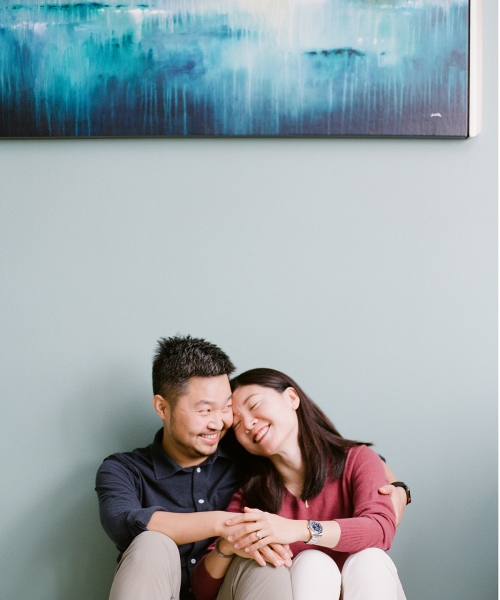
For a while Hildebrand narrowed her location lighting to a five-foot octabox and strobe for photographing in homes and other locations because they consistently produced the beautiful, soft light she was looking for. But the setup proved too cumbersome for the smaller rooms she more frequently found herself working in. She’d tested on- and off-camera flash but didn’t love the look they produced. One day she bounced the flash off a window as an experiment. It was life changing.
“It looked totally natural, like natural light coming from the window,” says Hildebrand. “I was so excited. It was a major turning point in the direction that I was shooting, using film indoors with a flash in any situation, regardless of how light or dark it is and with any family size, and knowing that I could get consistent results.”
Market what you want to sell. After solidifying her lighting setup, streamlining her film workflow, and then moving out of her studio, Hildebrand needed to refine her share of the Seattle market. She was still willing to photograph outdoors, but she wanted to cultivate a niche in in-home family sessions.
“I completely revamped my website and took everything down except for the types of images I wanted to sell,” she says.
She also wrote a few key blog posts about why she was shooting film and why a client’s home size, style, or location didn’t matter, which instantly dispelled doubts a potential client might have about their home’s possible inadequacies.
Hildebrand still photographs outdoor sessions, but she doesn’t post the images on her website because she doesn’t want them to appear representative of her niche. Although she does autumn and Christmas sessions, she doesn’t post those either. “I’m not looking to be considered seasonal,” she says. “I’m posting for a certain mentality, and my first love is photographing in the home.”
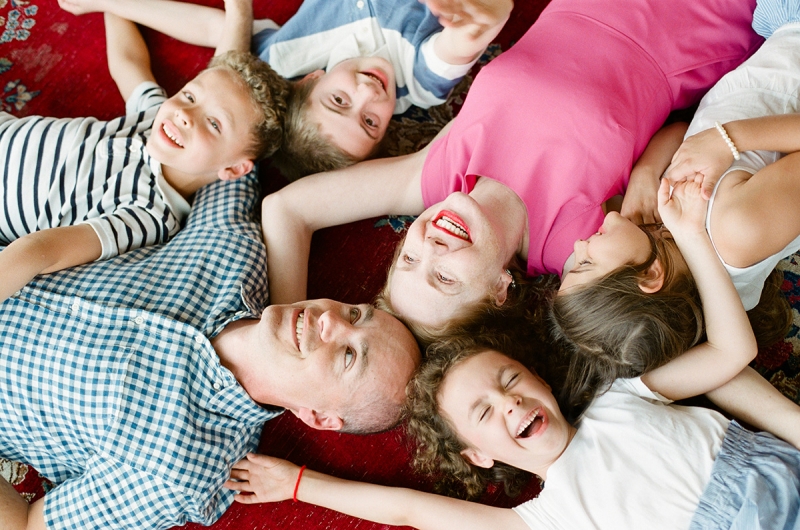
Conquer your fear. “I know that people are scared of film, scared of [photographing] families inside, scared of using flash,” she says. “But I know I can do those things. I’m constantly repeating that to myself. So what do I have to lose? Also, I know people worry about other photographers judging them. But I know my families love their images. So what about other photographers.”
The lesson: Zero in on your strongest points, own them, and don’t worry about the what-ifs or potential negatives. Remind yourself what you’re good at and continue to grow.
Keep setting goals. After making such fundamental changes to her business, it might seem that Hildebrand has things all figured out. But she knows her business is a work in progress.
“It’s always a journey,” she admits.
This year she’ll concentrate on natural posing techniques, pushing her creative boundaries with double exposures and movement in her images, and continue to grow her business by finding more of her target market. And as the goals and whims of consumers continue to evolve, as they always do, she’ll stay busy keeping up with what it takes to address their desires.
“That should be a constant goal for anyone,” she says. “I don’t think I should ever be at a point where there are no challenges, but instead I want to be always evolving.”
RELATED: Hildebrand's tips for posing families naturally
Stephanie Boozer is a writer in Charleston, South Carolina.

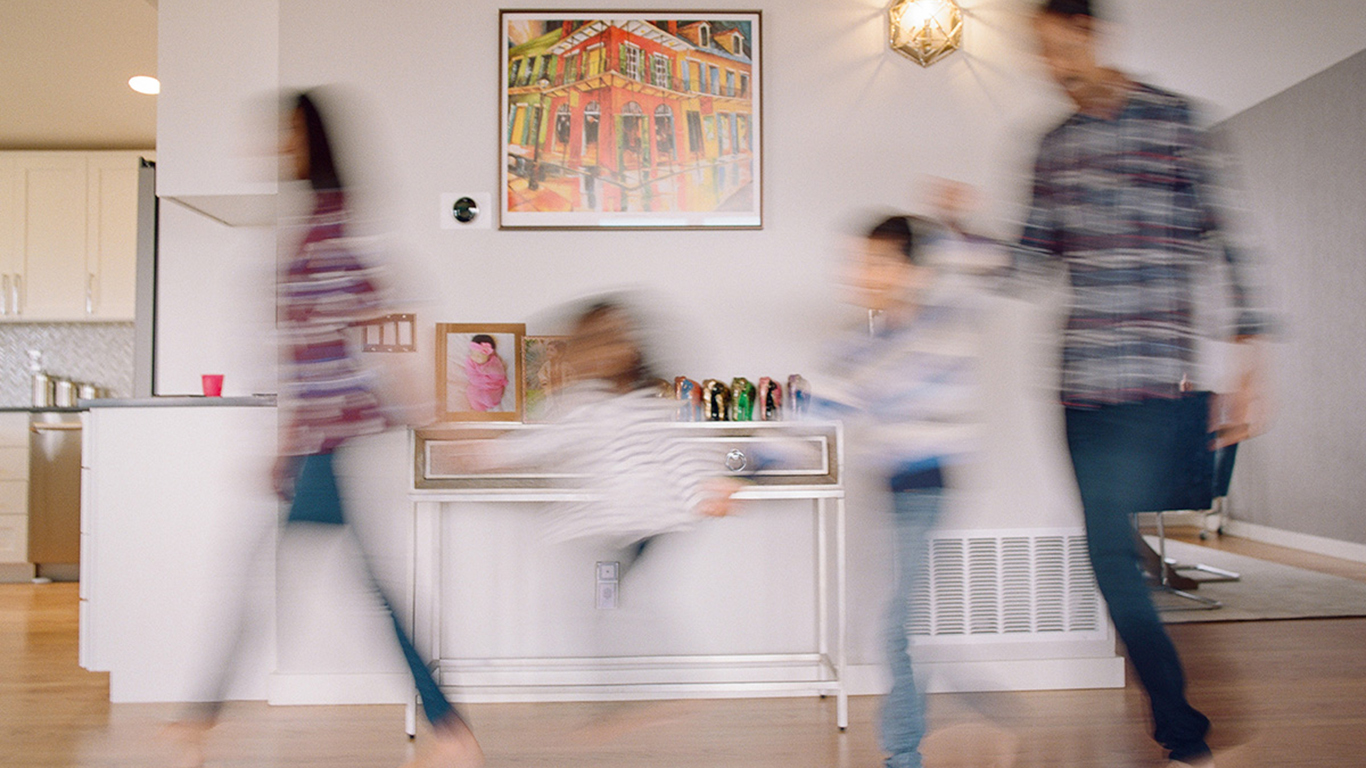
 View Gallery
View Gallery


